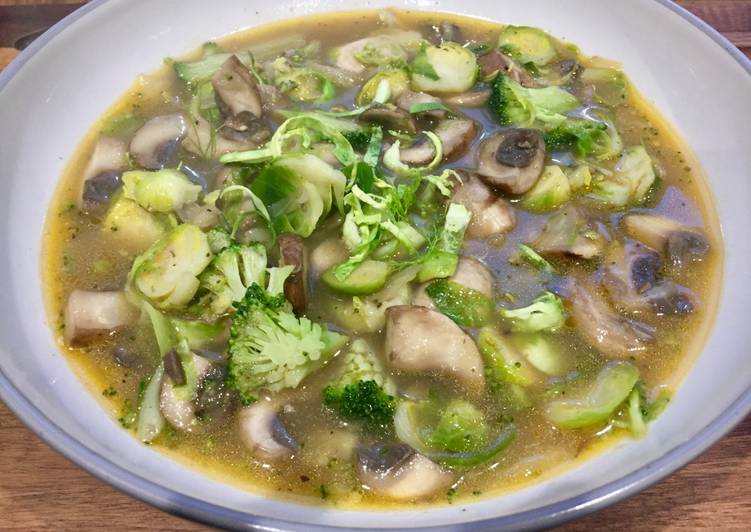
Hello everybody, it is Jim, welcome to our recipe page. Today, I’m gonna show you how to prepare a distinctive dish, 7/8 waste not want not soup. One of my favorites food recipes. For mine, I am going to make it a little bit tasty. This will be really delicious.
7/8 Waste not want not Soup is one of the most well liked of current trending foods on earth. It is easy, it’s fast, it tastes delicious. It’s enjoyed by millions every day. 7/8 Waste not want not Soup is something that I’ve loved my whole life. They’re fine and they look fantastic.
Unless you have an immediate, pressing need to install a specific patch, don't do it. Return to a cleaned saucepan and warm up again and serve with hot crusty bread. I have been told it tastes like mulligatawny soup, but each to there own a lovely.
To begin with this particular recipe, we must first prepare a few ingredients. You can have 7/8 waste not want not soup using 14 ingredients and 5 steps. Here is how you can achieve that.
The ingredients needed to make 7/8 Waste not want not Soup:
- Get For the stock
- Prepare carcass of a chicken broken into pieces or a few beef bones
- Take 2 handfuls leftover vegetables such as carrots, celery, onion
- Get 1 bayleaf
- Get 6 peppercorns
- Prepare sprig thyme
- Get splash vinegar
- Prepare to taste salt
- Take water
- Get For the soup
- Get handful leftover uncooked vege - I used fennel, Brussel sprouts, broccoli and chestnut mushrooms
- Get 1 tbsp fat from the top of the stock
- Make ready 1 pint (1/2 litre) stock
- Prepare to taste salt and pepper
Zoe Cormier examines eight ways the world can harness human waste. In other words, waste is any process that the customer does not want to pay for. This waste occurs when organizations separate the role of management from employees. Add waste not, want not to one of your lists below, or create a new one. "Waste not, want not" is an idiom that has a specific meaning, but it is neither of the two meanings you suggested.
Steps to make 7/8 Waste not want not Soup:
- To make the stock. After stripping the carcass/bones of the meat, place the bones in a large pan such as a stock pot.
- Wash (no need to peel) the vegetables, chop and add to the pan. Add the bayleaf, peppercorns, thyme, a little salt and a splash of vinegar (the vinegar helps release the nutrients from the marrow).
- Add enough water to cover. Bring to a simmer, cover and cook gently for at least an hour, preferably two or more or until the liquid takes on colour and is reduced by at least half. Strain, pushing the vegetables and bones against the sieve to extract maximum flavour. - Set aside. It can be stored in the fridge for a few days.
- To make the soup. Slice the vegetables thinly. Skim a little of the fat off the stock and place in a pan and heat. Add the vegetables to the pan turning as they cook. Season and add 1 pint of the stock. Add a few grinds of salt and pepper. Bring to the boil, turn down the heat to a simmer and cook until the vegetables are cooked but still have a bite.
- Check the seasoning then share between 2 bowls. I topped mine with finely chopped Brussel sprouts to add a bit of texture but you can add parsley or maybe a few dried chilli flakes, whatever takes your fancy.
What it does mean, basically, is that if you do not waste that which you have (waste not), you will not later want that which you have wasted (want not). The saying is meant to encourage. Sam never let his leftovers spoil in the refrigerator but made sure to eat them. waste not, want not. Economical use of one's resources pays off. While it's unfortunate that unwanted food is being thrown to waste, a new movement has Apart from supplying food to the poor, Kechara Soup Kitchen is also doing its part to encourage zero waste initiatives.
So that’s going to wrap this up with this special food 7/8 waste not want not soup recipe. Thank you very much for reading. I am sure that you can make this at home. There’s gonna be more interesting food at home recipes coming up. Remember to bookmark this page on your browser, and share it to your loved ones, friends and colleague. Thank you for reading. Go on get cooking!


